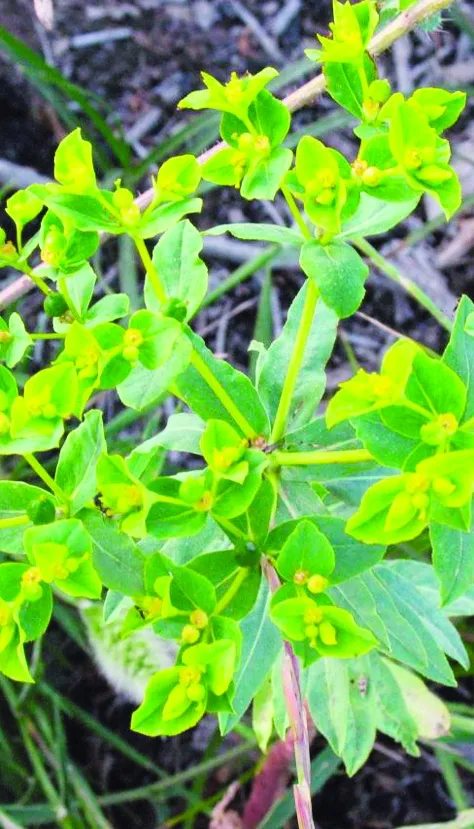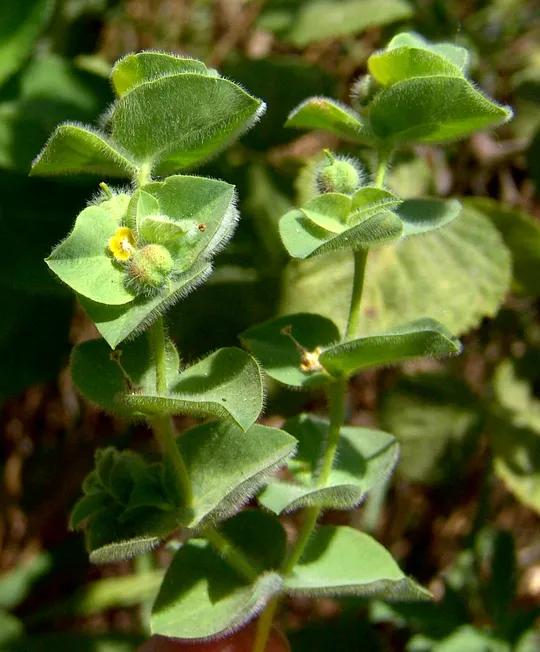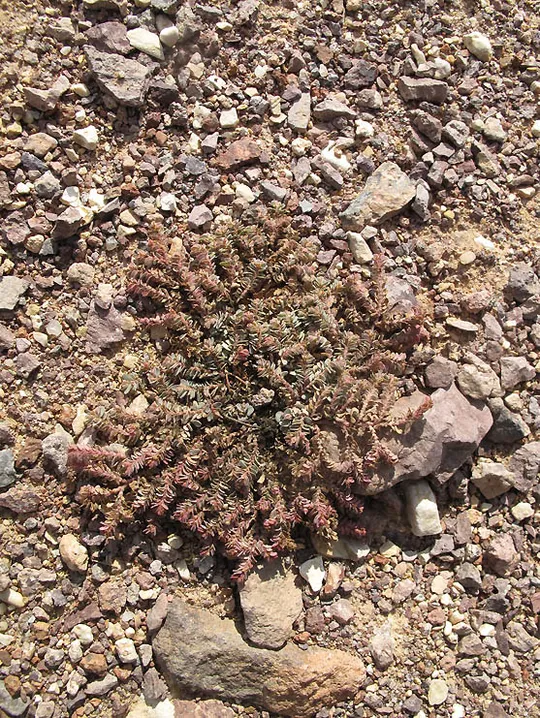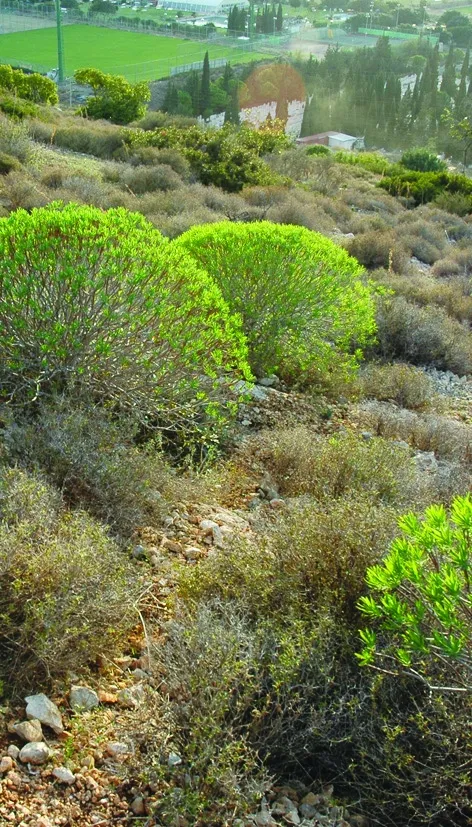Small-capsuled Spurge
Euphorbia microsphaera

Euphorbia
microsphaera is found in four regions in Israel. On
the Coastal plain – in the Sharon, on the Carmel Coast and in the Acre Valley. In northern Israel, it grows in the Hula Valley. In
the Sharon, it
is found in the Ahu Binyamina Meadow and in the Zeta marshes.
E. microsphaera was not common in the Sharon 80
years ago as well. In the Acre Valley, it is extinct in the Kurdani area, and now grows only east of Kiryat Bialik, in the Wadi Gdora floodplain. On the Carmel Coast E. microsphaera is known only from the Timsah Pond. In the Hula Valley it formerly occupied the greatest number of sites – six, and is known today from the Ahu Gonen and from heavy soils between
Kiryat Shmona and Bet Hillel. It is probably extinct from the Dafna and Enan sections (no rare species survey was conducted in the area). A number of collected specimens from the Hula
marshes are preserved, the last one from 1982.
Euphorbia microsphaera grows from
sea level up
to an altitude of 200 meters, in heavy soils in valleys that flood in
winter and at the edges of clay soil irrigated fields.
The genus Euphorbia includes some 2000 species,
found mostly in the tropics but also in the temperate zone. Euphorbia is
the largest genus of flowering plants in the world and also has the
most diverse morphology and life forms: annuals,
geophytes, cactus-like succulents and trees. The center of
diversity of species and growth forms is in
Africa. Groups of cactus-like Euphorbia that grow in the mountains of
Equatorial Africa and have giant succulent stems are particularly
unique. Some of the species in this group also grow on
the Horn of Africa and in Yemen. In Israel,
forty species grow in all types of habitats. Twelve species
are used for gardening.
All Euphorbia species have a typical bitter, milky sap (possibly
carcinogenic). Euphorbia species are known, mainly because of
their milky sap – as medicinal
and poisonous plants. This sap is known as a remedy for
warts.
• There are only seven sites
in Israel in which Euphorbia microsphaera grows
and they are concentrated in valleys in four different regions.
• Its habitat, seasonally flooded alluvial lands, was transformed eighty years ago from fallow to
intensively cultivated fields, including deep plowing and application
of chemical pesticides. This disturbance apparently seriously affects E. microsphaera populations.
•
There
is no information on population sizes; they are minuscle and
have very few plants. No rare species
survey was conducted on the southern coastal plain and in the Hula Valley.
• E. microsphaera
is a northern peripheral
species, and the Zeta marshes are the southernmost limit
of its distribution.
• E. microsphaera is protected in the
following nature
reserves: Hula, Ahu Gonen, Ahu Binyamina
and Zeta marshes.
A thorough survey
of the Hula Valley should be conducted to locate all
the sites where Euphorbia microsphaera grows. We are not thoroughly familiar with the
growing conditions of plant. The survey will indicate
its habitat, after which its seed bank, germination and growth conditions
should be studied. Two plots should be demarcated: in the Hula Valley –
in the Ahu Gonen or in the Hula; on the coastal plain – in the Taninim Stream Nature
Reserve. Appropriate hydrological and ecological management should be implemented
at these sites to preserve the populations.
Euphorbia microsphaera is endemic to
the Middle East, growing in Israel, Syria-Lebanon, Turkey, northern Iraq and Iran. The species is absent from all the southern desert countries – Jordan, Egypt,
Arabia and southern Iraq.
Euphorbia microsphaera
is an annual species endemic to the Middle East. It is very rare, and was
collected only a few times on the coastal plain and in the
Hula Valley. Its rarity results from the rarity of its habitat (seasonally
flooded heavy soils). The decrease in the number of sites is primarily the
result of the shift from traditional agriculture to intensive cultivation
with extensive use of chemicals.
Current Occupancy Map
| 1000 squre meter pixel | 5000 squre meter pixel | 10000 squre meter pixel | |
|---|---|---|---|
| number of observations | 0 | 0 | 0 |
| in total pixels | 0 | 0 | 0 |
| Family | Euphorbiaceae |
| Classification | On the endangered species list |
| Ecosystem | Mediterranean |
| Chorotype | Western Irano - Turanian |
| Conservation Site | Hula Nature Reserve |
| Rarity |
1
3
6
|
|---|---|
| Vulnerability |
0
4
4
|
| Attractiveness |
0
0
4
|
| Endemism |
0
0
4
|
| Red number |
1
4.2
10
|
| Peripherality | N |
| IUCN category | DD EW EX LC CR EN VU NT |
| Threat Definition according to the red book | Endangered |
 Based on:
Based on:






